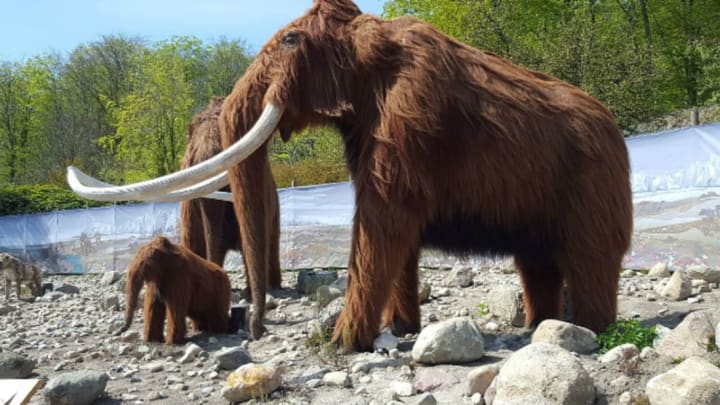Quick: Name all the Ice Age animals you can think of. There’s the woolly mammoth, and the … woolly mammoth … and the … yeah. You’re not wrong; woolly mammoths did live in the Pleistocene, or Ice Age. But they may have made it further into the present day than we thought; new evidence suggests the big beasts were tromping around in our own Holocene Age as recently as 5600 years ago. The results were published in the Proceedings of the National Academy of Sciences.
Today, the volcanic region of St. Paul Island is fairly isolated, lying about 200 miles south of mainland Alaska. But thousands of years ago it was part of the mainland itself, forming one tiny section of the Bering Land Bridge. The bridge played a huge role in the history of our planet, allowing humans and countless other species—including mammoths (Mammuthus primigenius)—to spread across the Northern Hemisphere.

St. Paul Island today. Image credit: Bill Briggs via Wikimedia Commons // CC BY-SA 3.0
But the bridge was not to last. Temperatures rose on Earth. Glaciers began to melt. Sea levels began to rise. Gradually, animals migrated to the highest ground they could find. Over time, those areas of high ground—like the top of the St. Paul volcano—became islands.
The first mammoth remains were found on St. Paul Island in 1999. Radiocarbon dating the bones of the five animals revealed that they were surprisingly recent, about 6500 years old. That’s long after mammoths had disappeared from the mainland. There was no evidence of human life, and scientists wondered what it was that finally took the mammoths out.
To find out, they checked in with the mammoths and their island. Researchers drilled down into a lakebed at the center of the island and extracted three samples of compressed sediment, each slightly deeper than the last. Those samples were combined into a long, composite core, packed with information about the world that was.
From that master sample, the team scooped out smaller samples. Some were examined for evidence of microscopic coprophilous—that’s poop-eating—fungi. Finding, quantifying, and identifying that fungi could help determine how well the mammoths (the fungi’s preferred food source) were doing.
Next, they sequenced the core’s sedimentary DNA, which allowed them to identify tiny traces of life. Then they scanned the sample for signs of other life, including microscopic crustaceans, algae, plants, and pollen. Finally, they found and analyzed the remains of an additional 14 mammoth specimens.
The results of this ecosystem-wide approach were kind of grim. Radiocarbon dating of the newly discovered mammoths found that the beasts had lived about a thousand years closer to the present day than had previously been believed, but the world they inhabited was a rough one.
The island, it seems, had begun to dry out around about 7800 years ago. Levels of nitrogen and carbon isotopes increased in the mammoths’ plant diet, suggesting the plants—and thus the mammoths—were getting thirsty. The island began to die. Then, about 5600 years ago, signs of mammoth and other life dropped precipitously.
Aptly named co-author Matthew Wooller is director of the Alaska Stable Isotope Facility at the University of Alaska Fairbanks. “It paints a dire picture of the situation for these mammoths,” he said in a press statement. “Freshwater resources look like the smoking gun for what pushed them into this untenable situation.”
Know of something you think we should cover? Email us at tips@mentalfloss.com.
